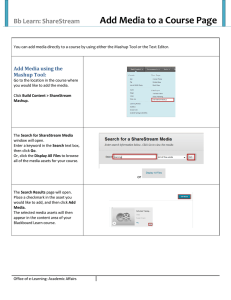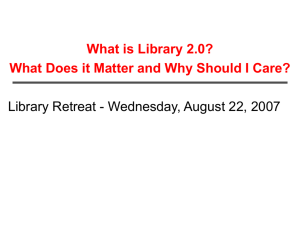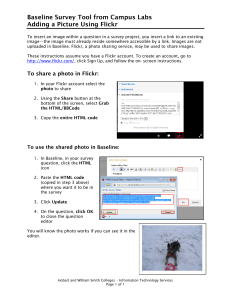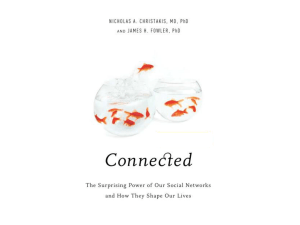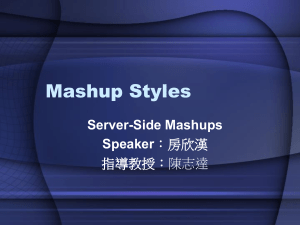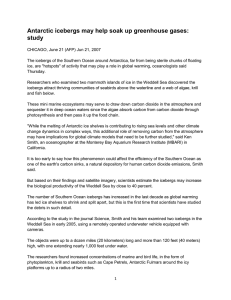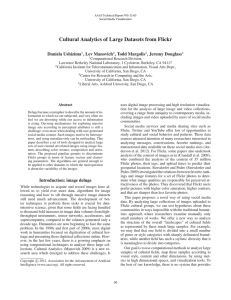Introduction to the Semantic Web
advertisement
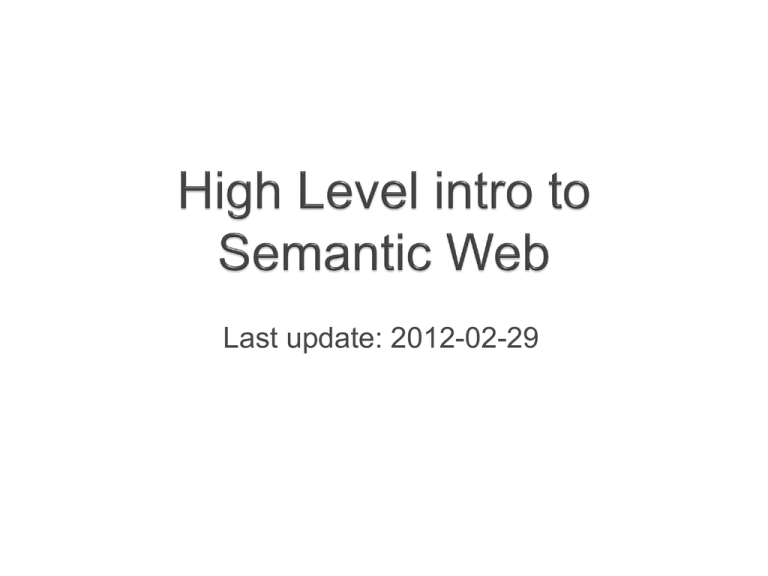
Last update: 2012-02-29 (2) (3) (7) (11) (14) (19) You had to consult a large number of sites, all different in style, purpose, possibly language… You had to mentally integrate all those information to achieve your goals We all know that, sometimes, this is a long and tedious process! All those pages are only tips of respective icebergs: the real data is hidden in databases, XML files, Excel sheets, … you only have access to what the Web page designers allow you to see (20) Specialized sites (Expedia, TripAdvisor) do a bit more: they gather and combine data from other sources (usually with the approval of the data owners) but they still control how you see those sources (21) But sometimes you want to personalize: access the original data and combine it yourself! (22) (27) I have to type the same data again and again… And this is even worse: I feed the icebergs… The raw data should be available on the Web let the community figure out what applications are possible… (28) (29) (31) Mashup sites are forced to do very ad-hoc jobs various data sources expose their data via Web Services, API-s each with a different API, a different logic, different structure mashup sites are forced to reinvent the wheel many times because there is no standard way getting to the data! (32) The raw data should be available in a standard way on the Web i.e., using URI-s to access data dereferencing that data should lead to something useful (33) What makes the current (document) Web work? people create different documents they give an address to it (i.e., a URI) and make it accessible to others on the Web (34) Others discover the site and they link to it The more they link to it, the more important and well known the page becomes remember, this is what, eg, Google exploits! (36) This is the “Network effect”: some pages become important, and others begin to rely on it even if the author did not expect it… The same network effect works on the raw data Many people link to the data, use it Much more (and diverse) applications will be created than the “authors” would even dream of! (39) (40) (41) Photo credit “nepatterson”, Flickr A “Web” where documents are available for download on the Internet but there would be no hyperlinks among them (43) This is certainly not what we want! (44) (45) The raw data should be available in a standard way on the Web There should be links among datasets (46) Aix-en-Provence on Wikipedia (47) Aix-en-Provence on “Provence and Beyond” (48) Photo credit “kxlly”, Flickr (50) (51) (52) On the traditional Web, humans are implicitly taken into account A Web link has a “context” that a user implicitly uses A human understands that this is where my office is, i.e/, the institution’s home page He/she knows what it means realizes that it is a research institute in Amsterdam (55) But, when handling data, something is missing; machines can’t make sense of the link alone New lesson learned: extra information (“label”) must be added to a link: “this links to my institution, which is a research institute” this information should be machine readable this is a characterization (or “classification”) of both the link and its target in some cases, the classification should allow for some limited “reasoning” (56) The raw data should be available in a standard way on the Web Datasets should be linked Links, data, sites, should be characterized, classified, etc. In future: possibility to write and change data… but that is still further down the line (57) The result is a Web of Data (58) (59) It is that simple… Of course, the devil is in the details (60) a common data model data has to be provided the “classification” of the terms can become very complex data in traditional databases should be reached but these details are fleshed out by experts as we speak! More an more data should be “published” on the Web this can lead to the “network effect” on data New breeds of applications come to the fore “mashups on steroids” better representation and usage of community knowledge new customization possibilities … (61)
